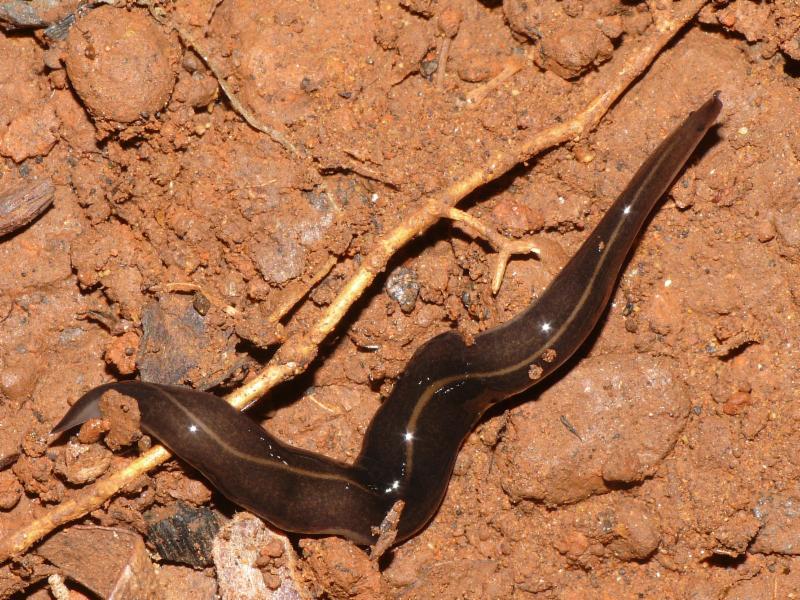
New Guinea Flatworm Identified On Sanibel Island
Invasive New Guinea Flatworm Identified on Sanibel Island.
The City Of Sanibel issued the following news release regarding the presence of New Guinea Flatworm on Sanibel Island.
|
Invasive New Guinea Flatworm
Identified on Sanibel Island
|
||||
The New Guinea flatworm (Platydemus manokwari), an introduced non-native invasive species to South Florida, has been positively identified on Sanibel Island. In September 2015, Sanibel-Captiva Conservation Foundation (SCCF) staff collected and preserved an unknown flatworm species on property owned by SCCF. The specimen was sent to experts at Florida International University and has been positively identified as the New Guinea flatworm.
The New Guinea flatworm, as its name suggests, is a native to New Guinea and other South Pacific islands. It was first discovered outside its native range in 1962 in Queensland, Australia. The flatworm has been identified worldwide throughout almost all temperate to tropical climate zones in places such as France and Miami, FL. This flatworm lives in the soil and is transported worldwide, most likely through potted plants. Most recently it was identified in Cape Coral and reported in the local media.
The New Guinea flatworm feeds mainly on adult tree snails and their eggs as well as other invertebrates that live in the soil. With no known predators and a voracious appetite, the New Guinea flatworm has been known to have detrimental impacts on populations of native tree snails worldwide.
The flatworms are known vectors for the parasitic nematodeAngiostrongylus cantonensis, (also known as rat lungworm) and may be spread to humans. The flatworms are also coated in an acidic slime and should NOT be handled. If touched, individuals should wash their hands immediately. If encountered, individuals can exterminate these flatworms by pouring boiling water on them. However, positive identification is important to ensure that native species are not harmed in the process.
The New Guinea flatworm looks similar to a leech, measures 40-65mm long, and it is typically flat and very dark brown with a thin light stripe down the middle of its “back”. If you think you’ve found a New Guinea flatworm and are unsure please call Joel Caouette at the City of Sanibel Natural Resources Department at (239) 472-3700 or send pictures to joel.caouette@mysanibel.com. You can also report sightings to the Florida Fish and Wildlife Conservation Commission at 888-IVE-GOT1 (888-483-4681).
|